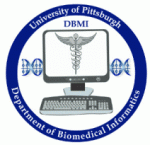Small-Scale Collaborations
Small-scale collaborations tend to be academic focused. In the early days of bioinformatics, such collaborations were needed to get access to data, as the only open bioinformatics database was GenBank. This started to change as more and more databanks adopted open-access policies. However, data are often downloaded in a raw format that needs the requisite expertise to be able to integrate them into larger projects: this is typically where bioinformaticians come into academic collaborations. Bioinformaticians may provide services via a core facility (as described elsewhere), but may also be part of small research groups within universities, research institutes or companies; sometimes, a bioinformatican may be the only individual with appropriate bioinformatics training and/or experience. Where this is the case, collaborations often form as the bioinformatician is sought out to join groups of researchers who lack the expertise to manage and run their own analyses.
These kinds of collaboration can be based on receiving a ‘fee for service’, or built on the understanding of co-authorship of publications that may arise from the work (the determining factor is usually whether the research question is determining new bioinformatics methods/tools or is using established bioinformatics protocols to answer broader biological questions). In the latter scenario, the place of bioinformaticians in the author list will reflect the level of their contribution to the project. The former scenario is akin to purchasing an antibody: the service is a well-defined product with an established fee, and authorship is unlikely. Regardless, it is best to define the expectations on both sides clearly and early in the collaboration. Generally, if a project involves computational analyses, then the nature of the analyses should be written into the grant upfront; this, in turn, means that the person responsible for performing the analyses should also have been identified. If a collaboration is between two PIs and includes students or post-docs, the PIs will typically be senior (last) authors, and the students/post-docs first authors. Here again, it is important to get agreement in advance about potential authorship, while the collaboration is being established and not after the project has finished.
Given the variable nature of expertise from lab to lab, no specific skill-set can be expected. Instead, the pattern of expertise becomes apparent from bioinformaticians’ publication records. Within a campus, the individual or small group will often become known among their peers for their bioinformatics focus, and collaborations develop organically based on the need for their particular skill-sets. Longer term collaborations, supported by grants, typically involve a discussion of the budget before the grant is submitted. This involves quantifying the percent effort for the bioinformatics components, which can include part of a programmer, or all of a student or post-doc. It may be that a figure for the bioinformatics work has already been set; in this case, it is essential either to work out a way of shaping the commitment to make that figure work, or to point out – upfront – that the figure is an underestimate that will not be convincing in the grant. Once the budget is fixed, however, it stays fixed.






